Abstract
Shock intensities (1 to 4 mA) and shock durations (0.3 to 0.75 sec) were concurrently varied over a range commonly used in free-operant avoidance studies using a lever-press response. Response rates were a positive linear function of the log of the product of intensity times duration. Shock rates were a negative linear function of that log. The increase in response rates was primarily due to a selective increase in the conditional probability of making responses with long interresponse times. The disproportionality of receiving shocks early in the session (warm-up) was also a linear function of the log of the intensity-duration product, with increasing disproportionality as the value of the intensity-duration product was increased. Thus, with all measures of the avoidance performance, shock intensity and shock duration combine in a multiplicative fashion to determine the avoidance performance.
Full text
PDF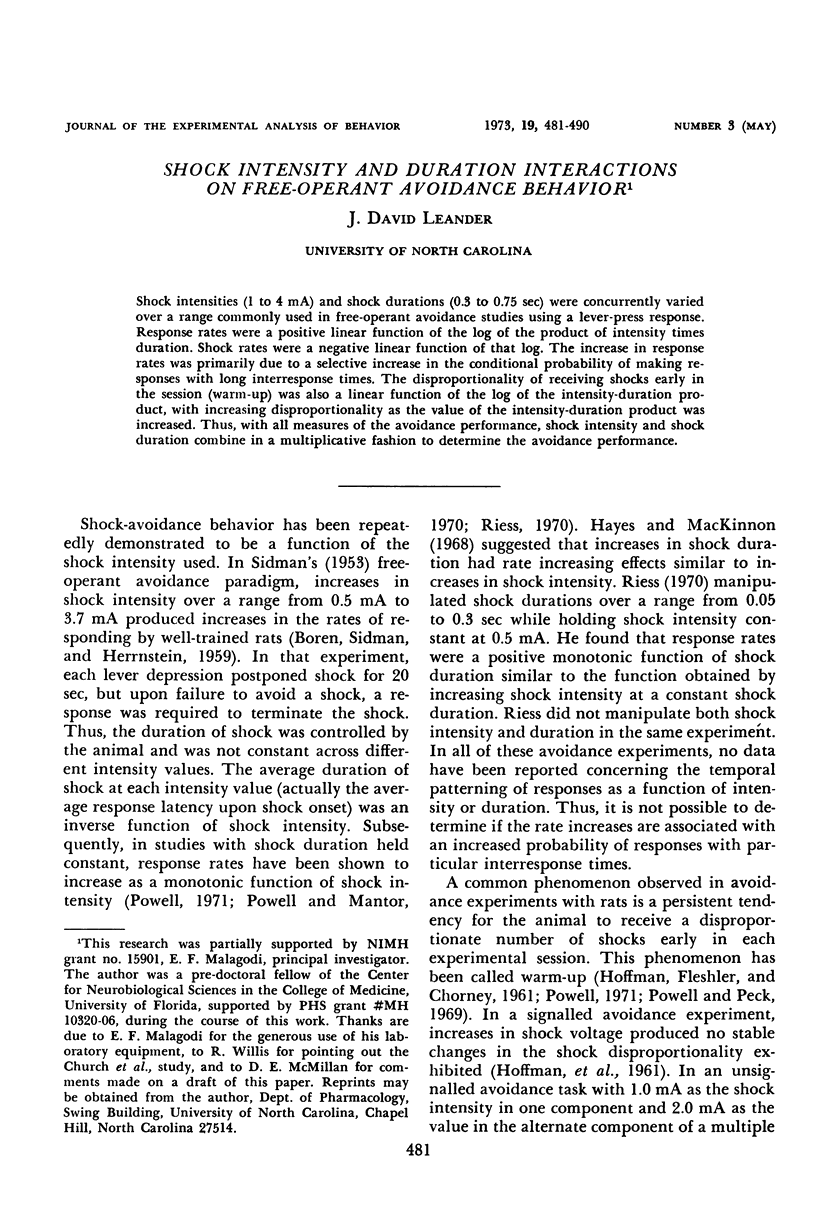
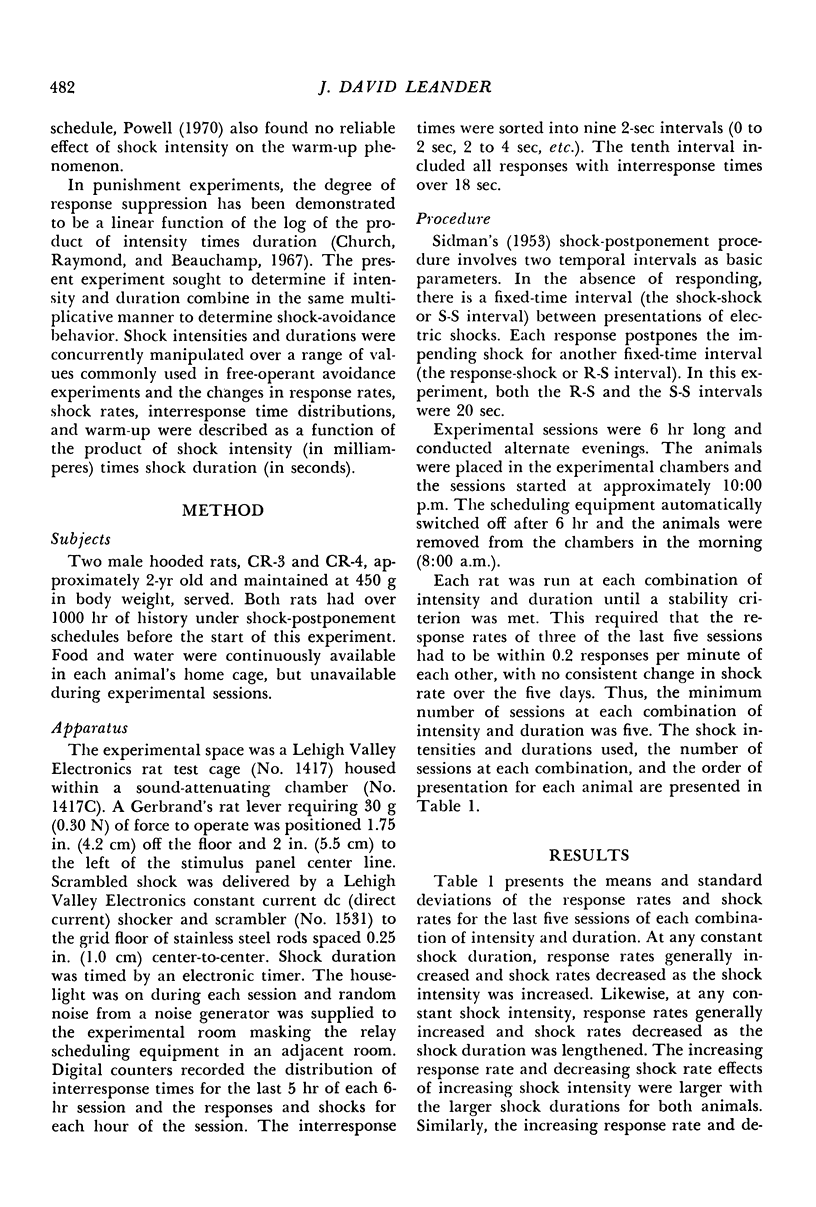
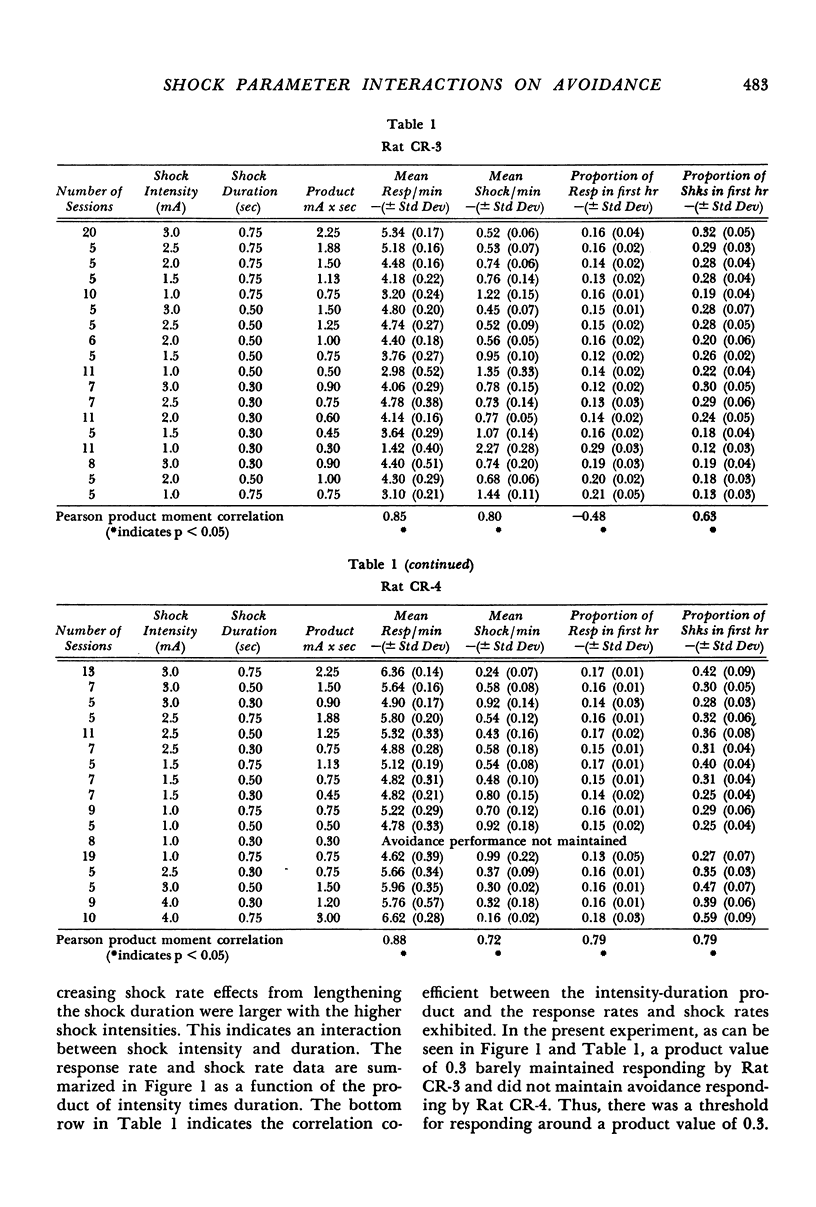
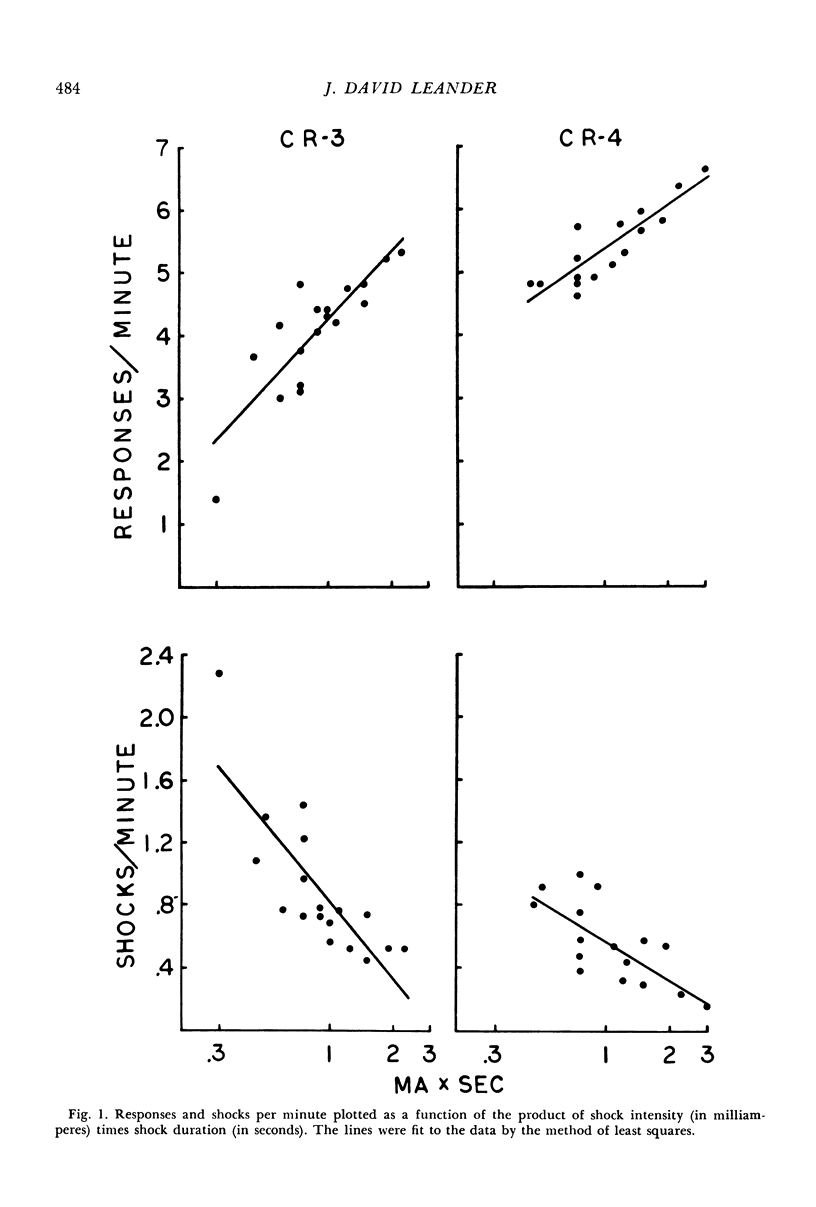
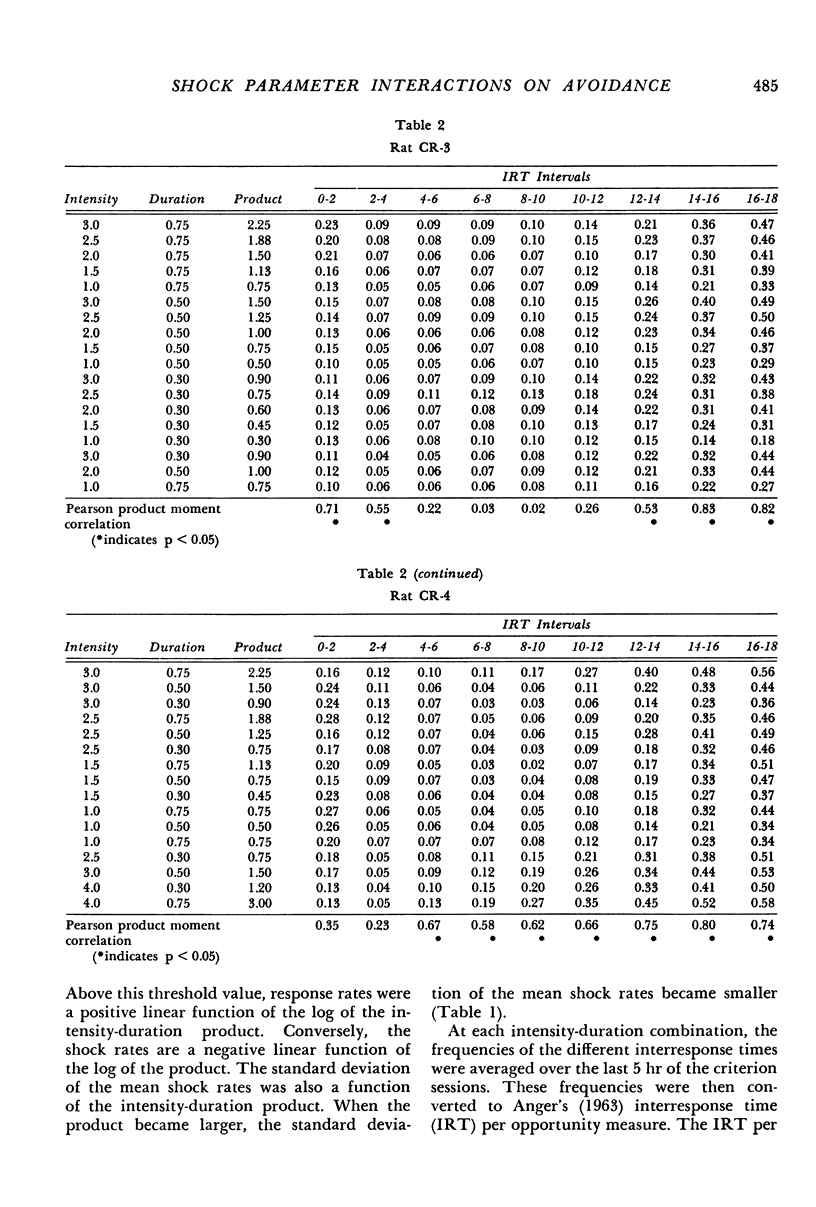
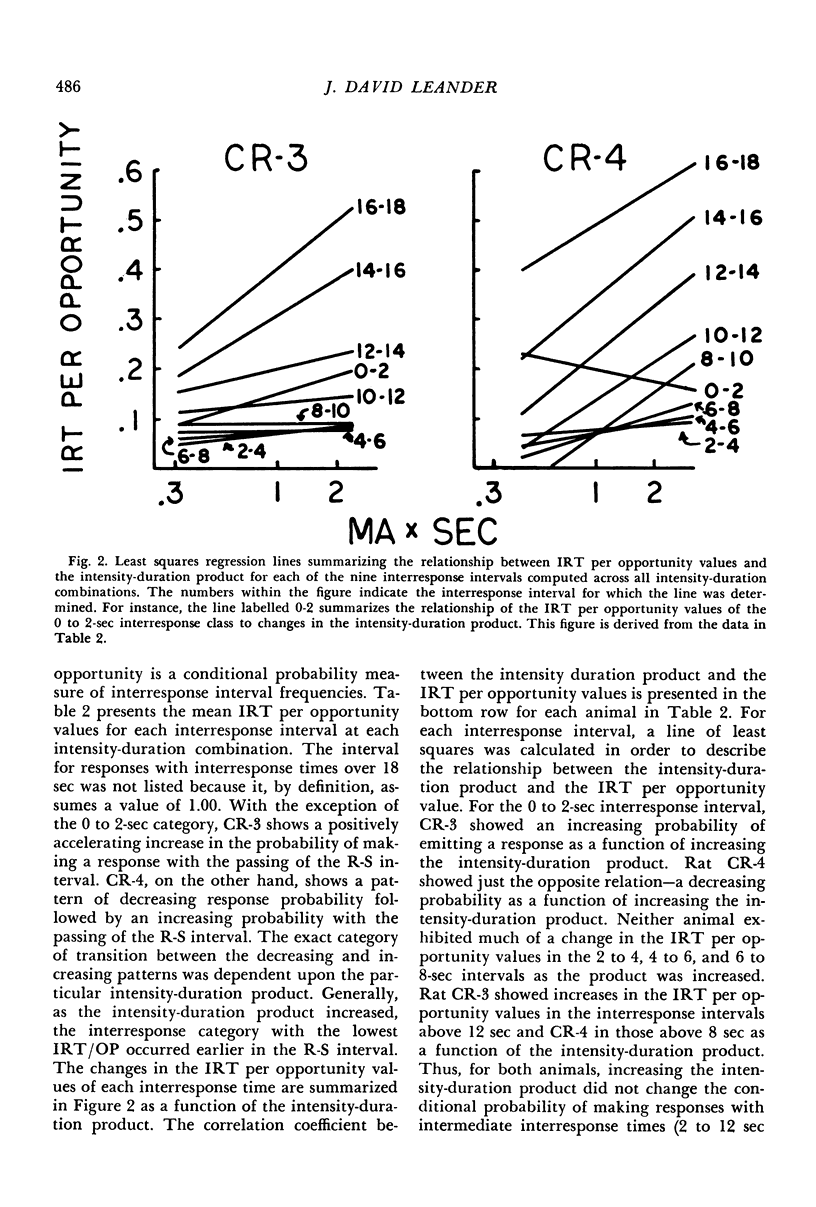
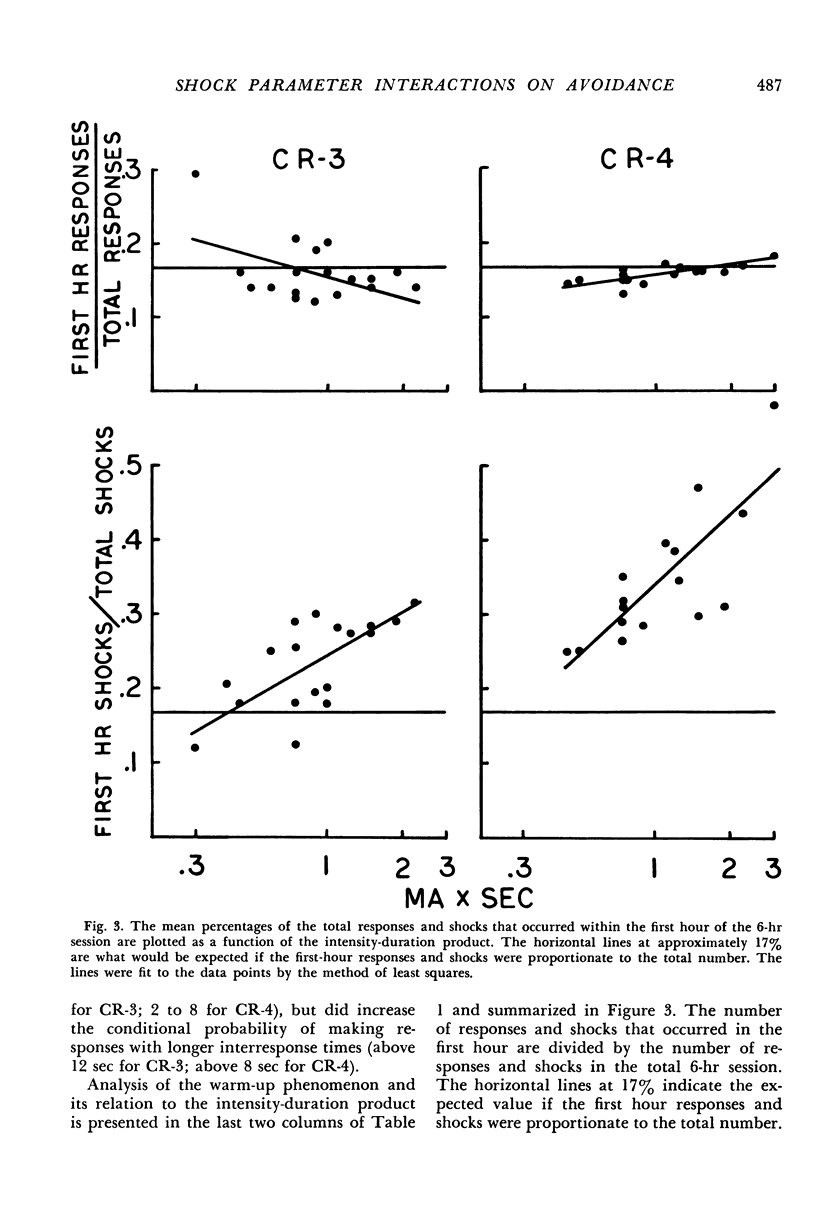
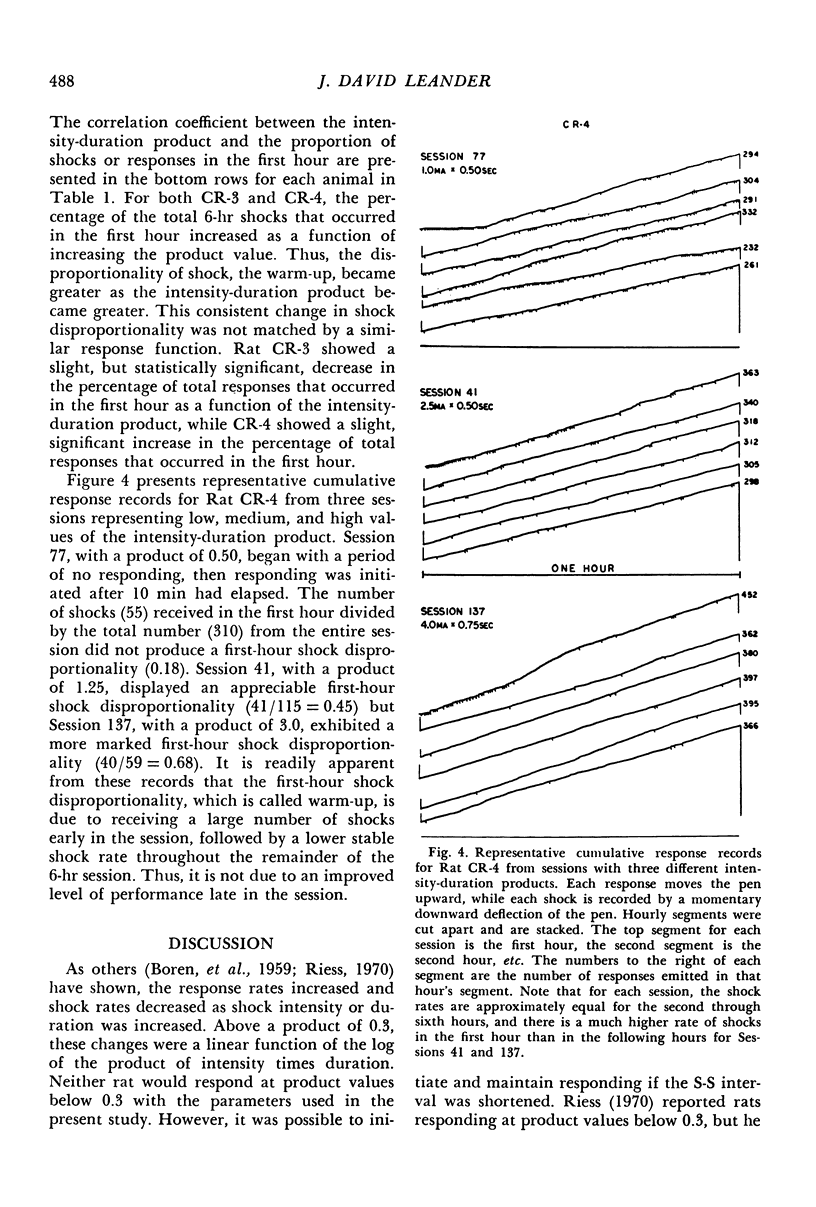
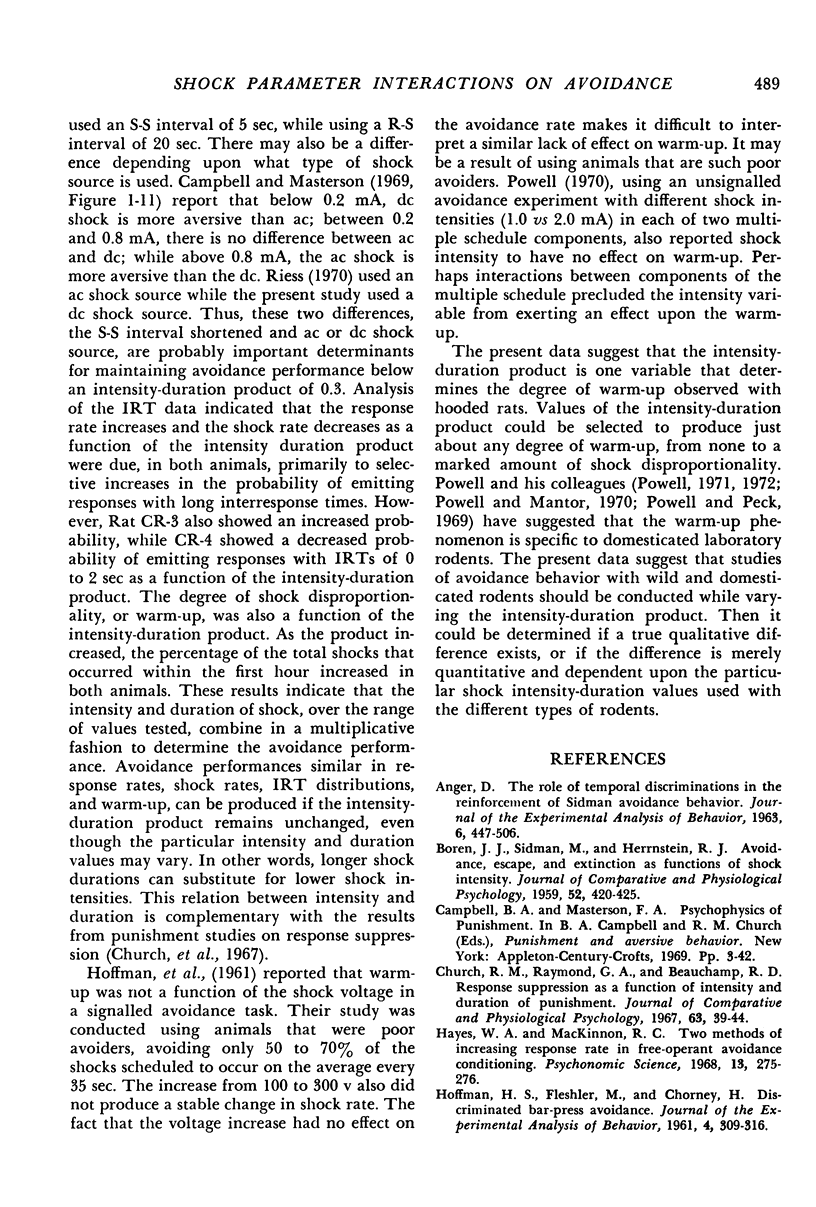
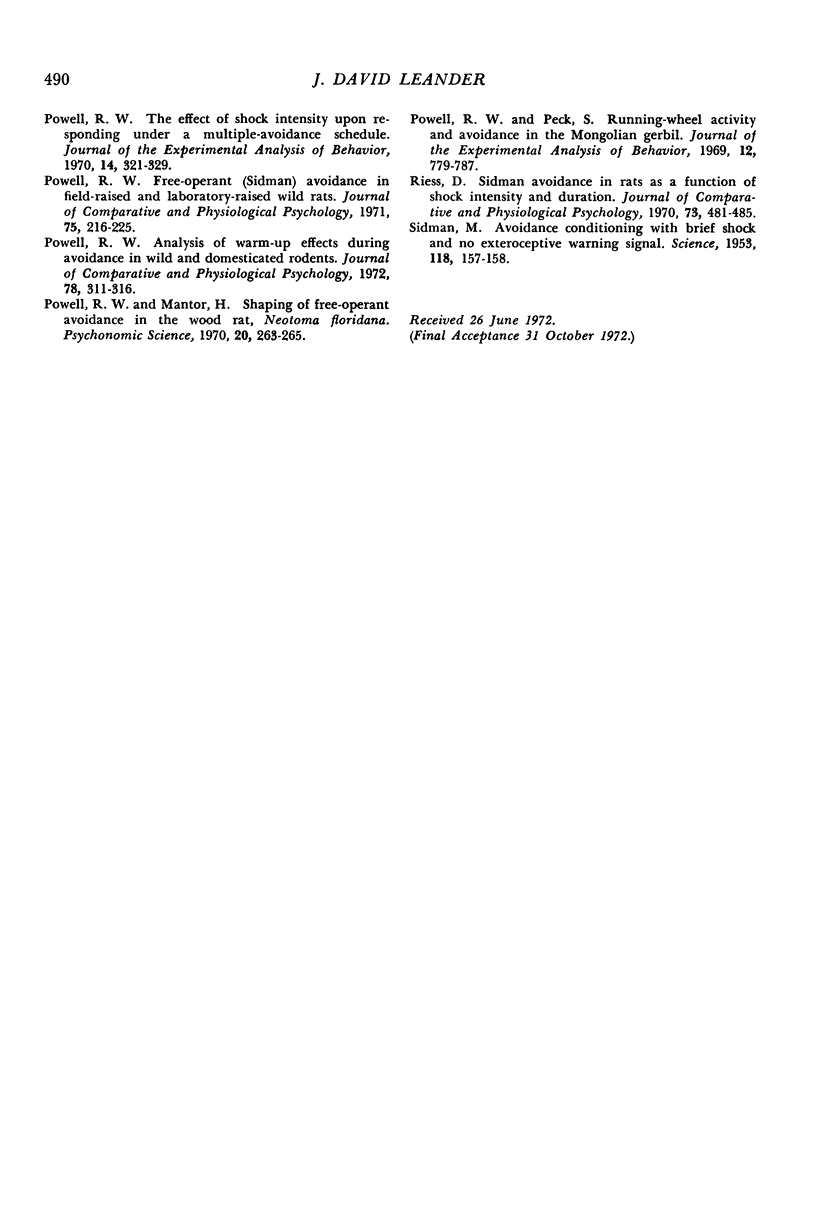
Selected References
These references are in PubMed. This may not be the complete list of references from this article.
- BOREN J. J., SIDMAN M., HERRNSTEIN R. J. Avoidance, escape, and extinction as functions of shock intensity. J Comp Physiol Psychol. 1959 Aug;52:420–426. doi: 10.1037/h0042727. [DOI] [PubMed] [Google Scholar]
- Church R. M., Raymond G. A., Beauchamp R. D. Response suppression as a function of intensity and duration of a punishment. J Comp Physiol Psychol. 1967 Feb;63(1):39–44. doi: 10.1037/h0024174. [DOI] [PubMed] [Google Scholar]
- HOFFMAN H. S., FLESHLER M., CHORNY H. Discriminated bar-press avoidance. J Exp Anal Behav. 1961 Oct;4:309–316. doi: 10.1901/jeab.1961.4-309. [DOI] [PMC free article] [PubMed] [Google Scholar]
- Powell R. W. Analysis of warm-up effects during avoidance in wild and domesticated rodents. J Comp Physiol Psychol. 1972 Feb;78(2):311–316. doi: 10.1037/h0032191. [DOI] [PubMed] [Google Scholar]
- Powell R. W., Peck S. Running-wheel activity and avoidance in the mongolian gerbil. J Exp Anal Behav. 1969 Sep;12(5):779–787. doi: 10.1901/jeab.1969.12-779. [DOI] [PMC free article] [PubMed] [Google Scholar]
- Powell R. W. The effect of shock intensity upon responding under a multiple-avoidance schedule. J Exp Anal Behav. 1970 Nov;14(3):321–329. doi: 10.1901/jeab.1970.14-321. [DOI] [PMC free article] [PubMed] [Google Scholar]
- Riess D. Sidman avoidance in rats as a function of shock intensity and duration. J Comp Physiol Psychol. 1970 Dec;73(3):481–485. doi: 10.1037/h0030235. [DOI] [PubMed] [Google Scholar]
- SIDMAN M. Avoidance conditioning with brief shock and no exteroceptive warning signal. Science. 1953 Aug 7;118(3058):157–158. doi: 10.1126/science.118.3058.157. [DOI] [PubMed] [Google Scholar]


